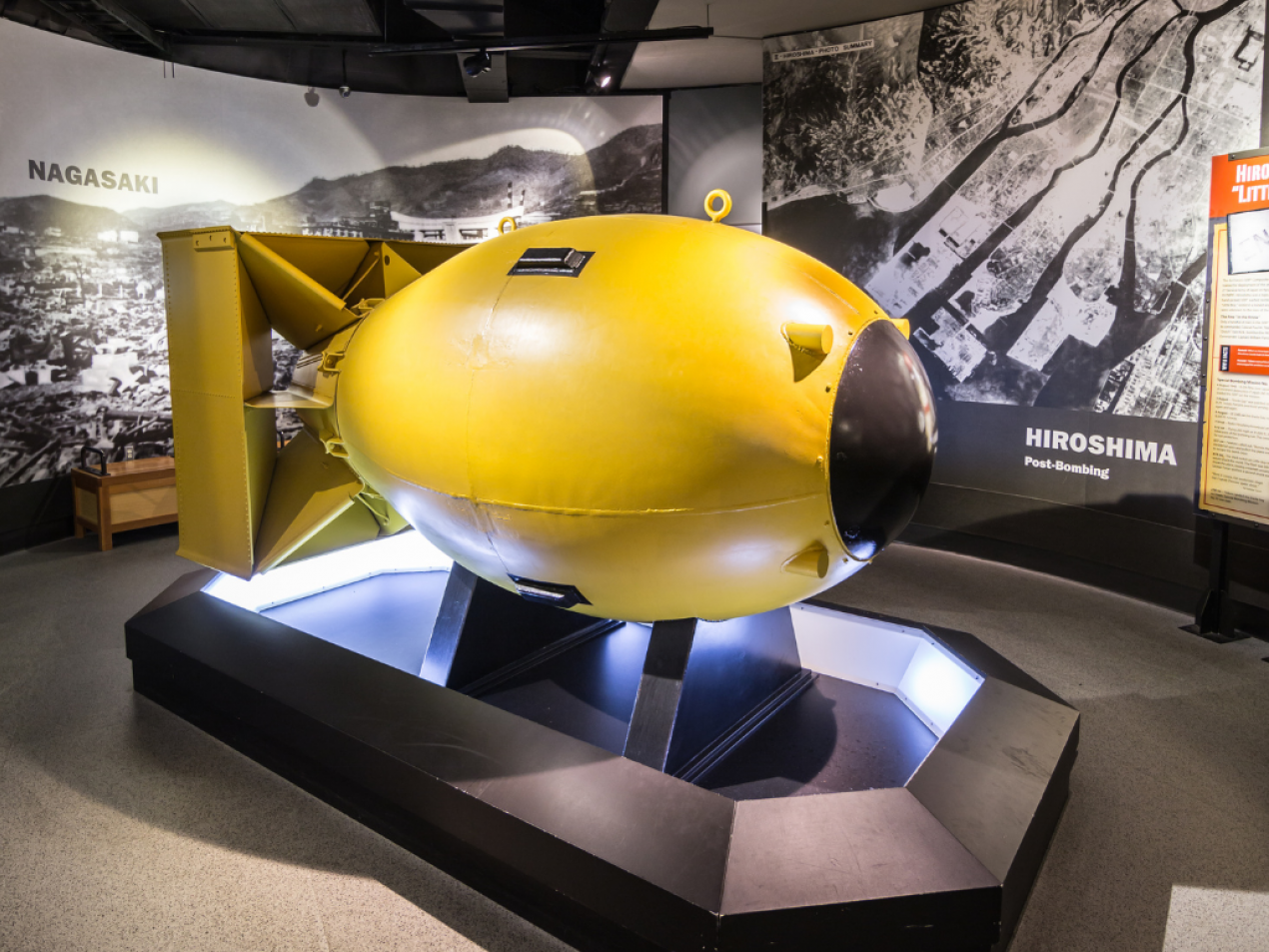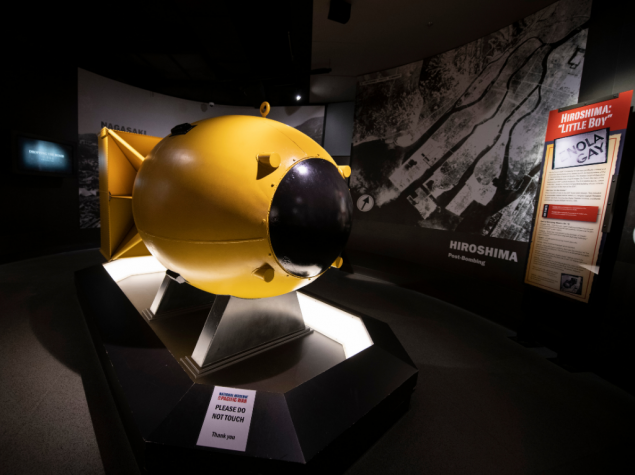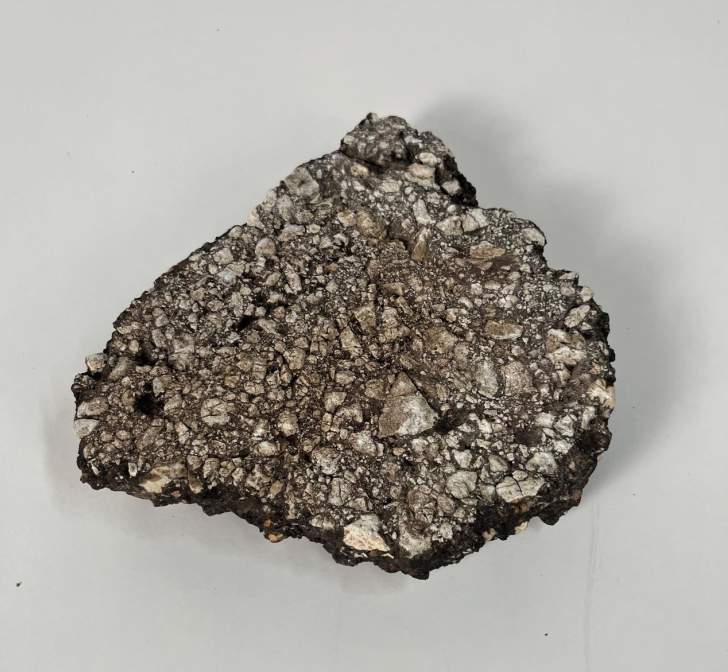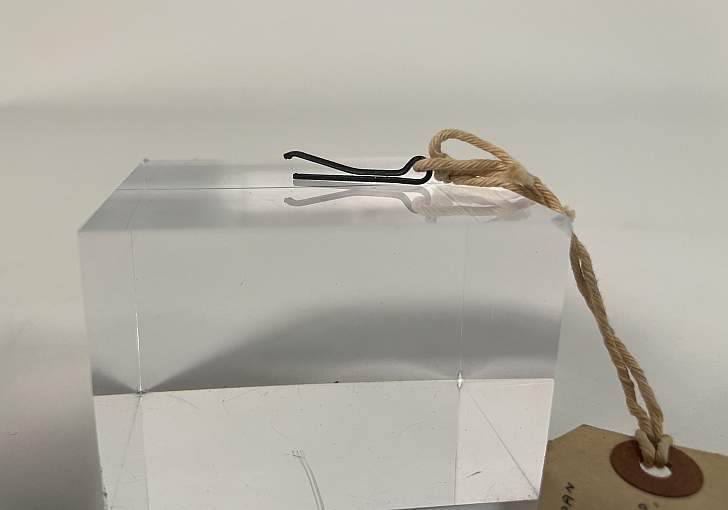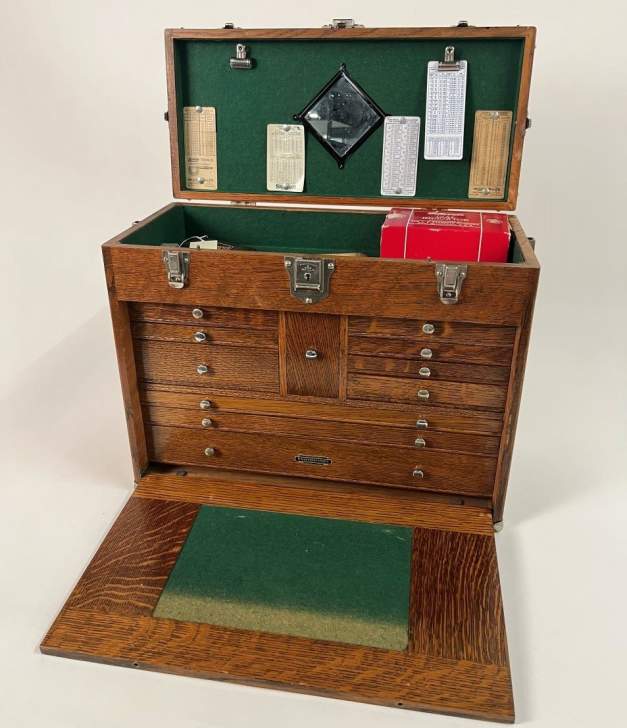“Fat Man” style bomb casing, similar to that used on Nagasaki, Japan on 9 August 1945. This item is on loan from the National Museum of Nuclear Science and History, Albuquerque, New Mexico. Although they were both atomic bombs, the two nuclear weapons used in August 1945 were very different. “Little Boy” was a uranium bomb with a proven gun-type triggering mechanism. “Fat Man”, with the recently-discovered element plutonium at its core, required a new method, an implosion detonation.
The Atom Bombs: Bomb Casing
This section describes the bombing missions which dropped the atomic bombs on Hiroshima and Nagasaki.
Overview
The Manhattan Project created two bombs to drop on Japan in August 1945; the uranium bomb, Little Boy, and the plutonium bomb, Fat Man. These weapons brought about the end of the war and the beginning of a new future.

An image of the bomb "Little Boy" on transport. Photo from the National Archives.
Colonel Tibbets, commander of the 509th Composite Group, piloted his plane, Enola Gay, with Little Boy. Their target was the 2nd General Army Headquarters of Japan in Hiroshima. His mission went almost perfectly. At 0818 on 6 August 1945, the world was introduced to the atomic bomb as it exploded over Hiroshima, sending shockwaves over Japan and across the globe.

The bomb "Fat Man" on a transport carriage before the bombing mission. Photo from the National Archives.
Three days later, on 9 August, Major Charles Sweeney had a very different experience with Fat Man. A damaged fuel-transfer pump and late photographer plane severely reduced their fuel supply. The plane, Bock’s Car, headed for the Japanese ordnance factories at Kokura, but clouds blocked the target, making it impossible to bomb. The crew then headed for the military factories at Nagasaki. It was the only city they could reach with their limited fuel. Soon Fat Man detonated above Nagasaki, once again shocking the world with its destruction.
Bomb Casing
Artifact Details
Fat Man Dimensions:
10'8" long x 5' wide
Fat Man Weight:
10,265lbs
Fat Man Yield:
21 kilotons
Exhibit Preview
The Atomic Bomb Exhibit
This exhibit tells the story of the atomic bomb from the development stages to the effects of the bombings on Hiroshima and Nagasaki in August 1945....

